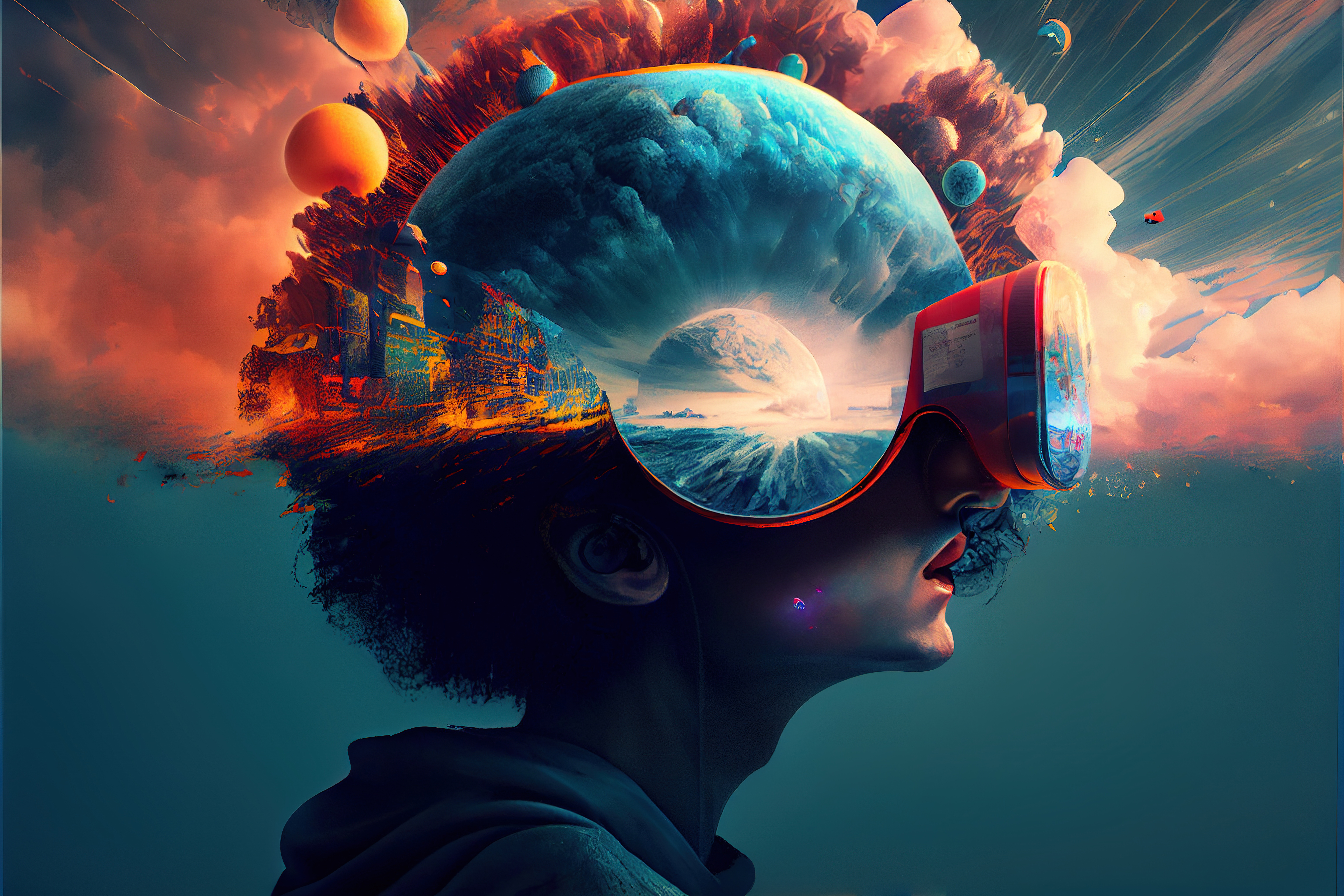The future of digital retail holds immense potential, fueled by advancements that were once only the stuff of science fiction. Discover how ground-breaking technology is shaping the way that we shop online, and see how real-life brands are harnessing these advancements to provide better customer experiences.

Keywords
Let's take a look at the top four ground-breaking technologies that are impacting the digital commerce landscape today, and how companies are already utilizing these futuristic strategies today.
The leaps and bounds we’ve made within Artificial Intelligence (AI) over the past few years is truly mind-boggling; what once produced clunky, robotic chunks of text can now create eloquent and natural-sounding sentences that pass through human detection with ease. Generative AI can help product teams create compelling (and SEO-friendly) product descriptions and product page copy, along with instantaneous translations and suggestions for product information. Not to mention, this technology can analyze almost unfathomable amounts of data instantaneously, sorting through millions of transactions, interactions, and browsing patterns to pull out customer insights that lead to more personalized product recommendations, advertisements, and customer experiences. And it can even digest visual content - brands can utilize AI to analyze product images to identify characteristics like color, material, and size to pull as attributes.
Mondial Tissus, a leader in the French retail market for fabrics and haberdashery items, successfully leveraged AI technology to supercharge their product experience. With the combination of a composable PIM and ChatGPT's AI capabilities, Mondial Tissus automated the generation and translation of hundreds of product attributes, resulting in improved product descriptions and easy localization of content for international markets within hours. This not only accelerated their time-to-market but also enhanced the quality of their offerings, empowering their teams to develop high-value assets, personalized for each season, and expand into new geographies with ease.

Together, AR and VR are transforming digital commerce, blurring the lines between online and physical shopping. With VR, consumers can virtually “try on” clothes and accessories without stepping foot in store. Similarly, AR allows consumers to visualize products in their home before ever making a purchase. Visual configurators personalize the shopping experience by enabling customers to visually bundle the items of their choice and customize to their heart’s desire. By meshing the ease of online shopping with the power of physically seeing how a product incorporates into a space, brands are empowering consumers to make better shopping decisions. Plus, these brands will then have the data they need to suggest compatible products to compliment a buyer’s choice, encouraging cross-sales.
Founded by a CGI expert who created visual effects in Hollywood, Threekit is a 3D product configurator that offers brands the opportunity to create virtual and augmented reality experiences for their customers on their own D2C site. By enabling consumers to visually change color, fabric, or size of products and see the adjustment in real-time, Threekit provides a visual representation of the exact product that the consumer wants. Plus, their AR tool for eCommerce lets users virtually place these customizable products in their space. Utilized by Starbucks Coffee, Crate&Barrel, and TaylorMade, Threekit is already supporting the visual commerce efforts of massive corporations.

Live commerce is an emerging trend that combines live streaming and eCommerce, providing a real-time interactive shopping experience to consumers. Influencers, brands, or retailers will broadcast live video sessions where they showcase and demonstrate products, engage with viewers, and offer exclusive deals or discounts.
Not only does this interactive format allow customers to ask questions, receive instant feedback, and make purchases directly within the livestream, but it also enables businesses without the resources for a brick-and-mortar store to still showcase their products and build trust and credibility among customers.
However, as with all aspect of digital commerce, the product experience your business can offer through live commerce is only as good as your product information. If you provide an influencer with the wrong list of ingredients for the lipstick they’re demoing, or doesn’t know the correct dates for a flash sale that someone asks about in the chat, this experience falls flat and becomes a liability for the brand.
Major beauty and personal care retailer Sephora has been making waves in the world of live commerce, hosting their “Sephora Live” events, where beauty experts and influencers broadcast live sessions to showcase products, makeup tutorials, and engage with viewers in real-time. During a “Sephora Live” session, the expert host will demonstrate application techniques, answer questions, and offer deals, encouraging consumers to interact through comments and make purchases directly in the live stream. This digital commerce strategy also enables Sephora to reach customers who may not live geographically near a Sephora location, driving revenue and unlocking new markets.

Social commerce is one of the fastest growing segments of digital commerce as it fuses two of the most popular uses of the Internet: social media and online shopping. By bringing the convenience of eCommerce to popular social platforms like Instagram or TikTok, users can discover, research, and buy products all without exiting the app.
Social commerce also enables consumers to easily access real, trustworthy user reviews, check out personalized recommendations, and purchase exactly the same item as their favorite influencer, all so that they can feel confident that they’re purchasing the right product.
Again, a strong social commerce presence relies on strong product information. Imagine a customer comes to your TikTok page to see videos of your product in action, but all they see are recycled images from Instagram plastered into a video template. Or they try to input a promo code they saw from a Tweet, but the promotion doesn’t start until the following week and the Tweet never mentioned that. This is a recipe for bad product experiences.
Starbucks has effectively incorporated social media platforms into their digital commerce strategy, particularly Instagram and Twitter. On the photo-sharing app, Starbucks brews up visually appealing images of their products and utilizes the Instagram Shoppable post feature that allows users to click on tagged items and make purchases directly from the Starbucks website or app. Plus, they encourage user-generated content by promoting specific hashtags, featuring customer photos, and running Instagram-specific promotions.
Starbucks is equally as innovative on Twitter - through their “Tweet-a-Coffee” campaign, users are able to send digital Starbucks gift cards to friends or followers directly through just a tweet, linking their Starbucks account to their Twitter profile. Not only do these social channels allow Starbucks to promote their products and connect with customers, but they actually help drive revenue, customer loyalty, and a better customer experience.

As we look into the crystal ball of digital commerce, it becomes clear that the integration of cutting-edge technologies will define the future shopping landscape. Businesses that harness the potential of AI, AR, VR, live commerce, and social commerce while maintaining a focus on accurate product information will thrive in this ever-evolving digital retail realm. The possibilities are exciting, and the road ahead is paved with boundless opportunities for those who embrace the dynamic world of digital commerce.
For a more in-depth look into the future of digital commerce, along with actionable tips & tricks that your organization can use to kickstart your digital commerce strategy today, download the Complete Guide to Digital Commerce.

Explore how these 2025 Experience Award winners elevated product experiences by centralizing data, automating workflows, scaling globally, and...
Read more
Welcome to the digital shelf: the online space where products are discovered, evaluated, and purchased. Whether you’re aiming to boost visibility,...
Read more
As more brands are transitioning to Digital Product Passports (DPP), there are crucial steps that need to be taken to ensure that brands are...
Read more